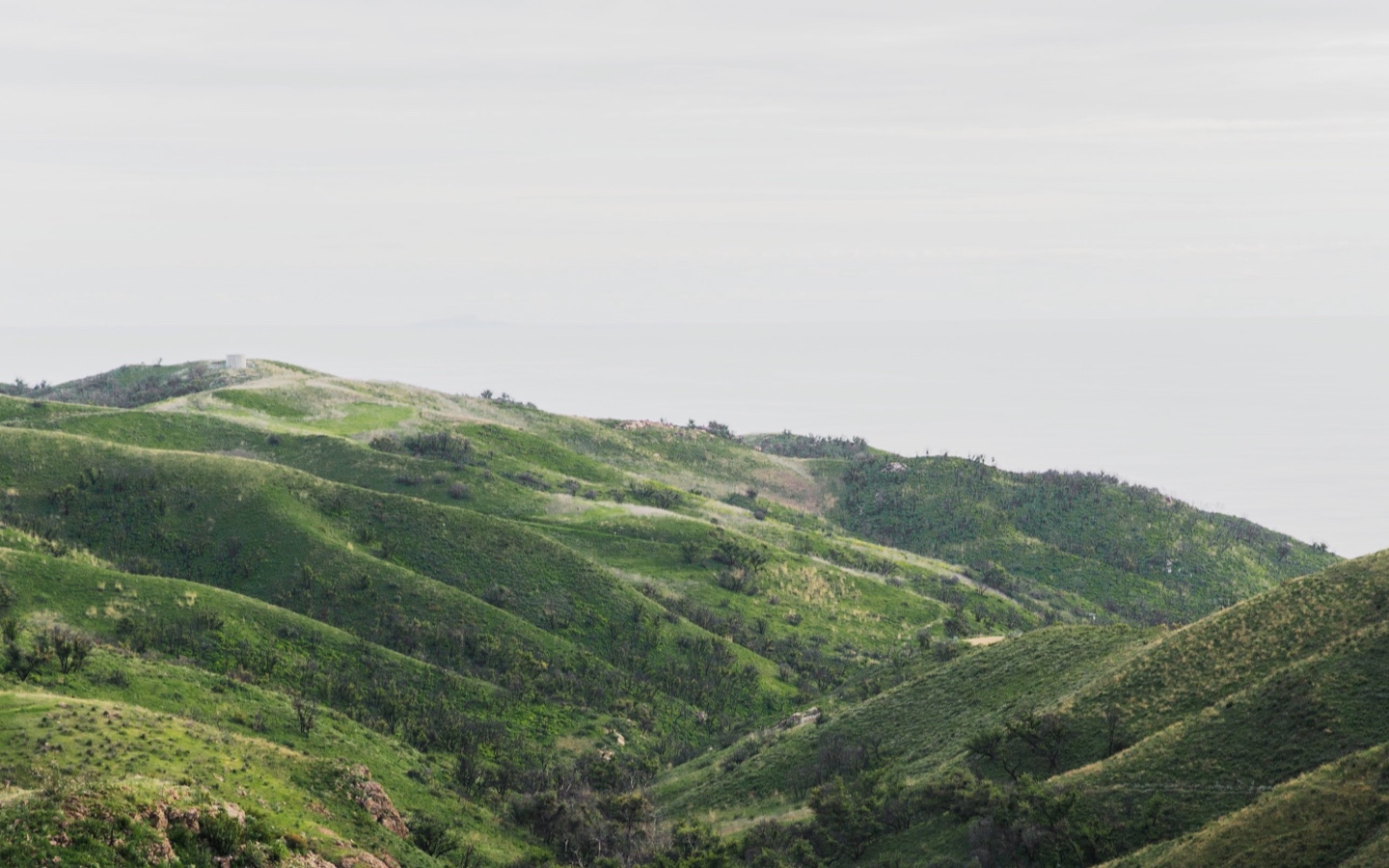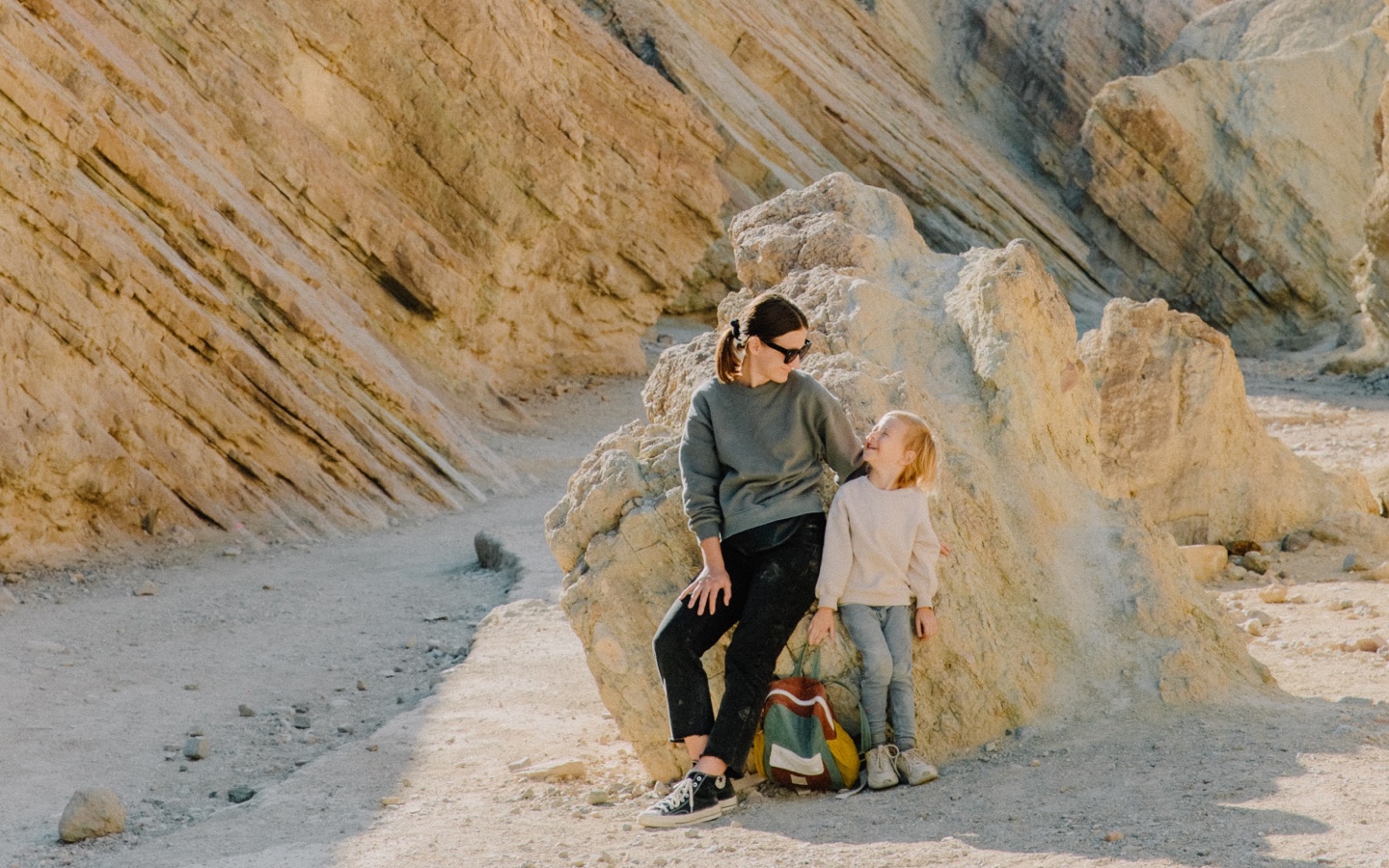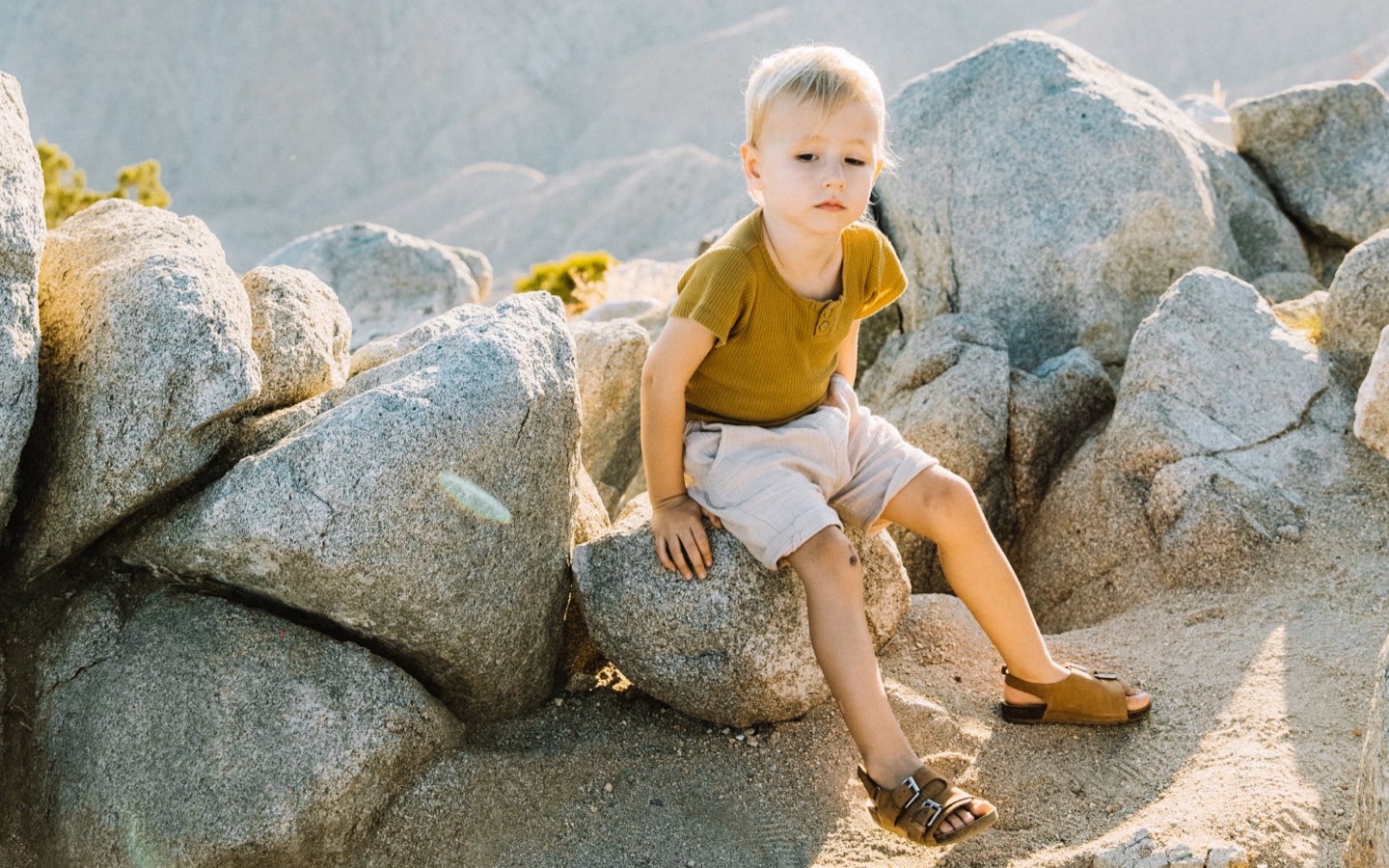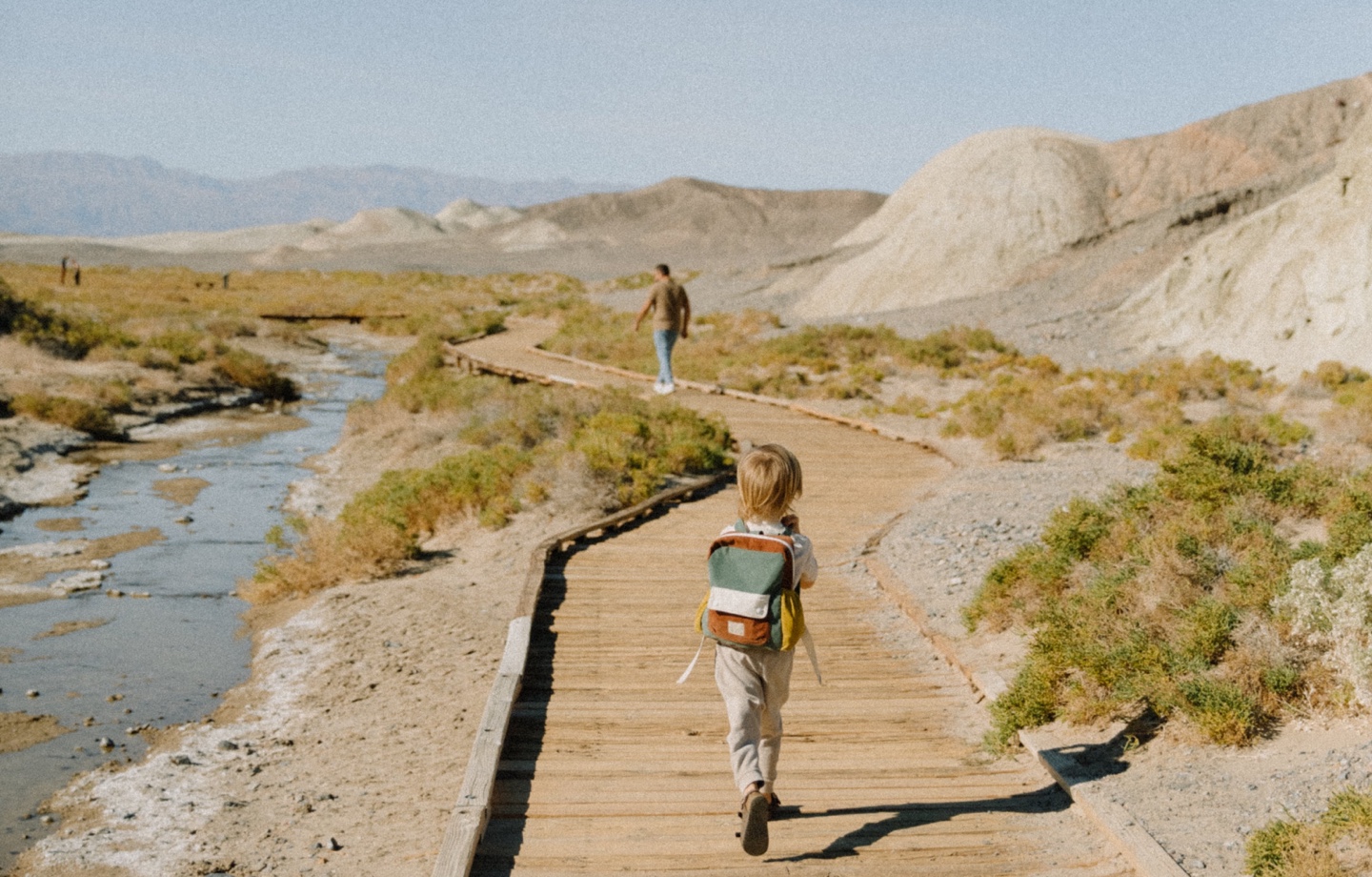No matter where you live, talking to the next generation about climate change — and consequences like increased wildfire — is the only way to build resiliency and instill hope for the uncertain future ahead.
Last summer, my family put together a climate change-inspired go-bag for the first time. Extra clothes for me, my husband, and my son. A bag of dog food. Non-perishable food, a few toys, a flashlight, matches, a radio, a water purifier. We shoved all of it into a duffle bag that we store in the garage as a kind of insurance policy against the worst-case scenario we fear: losing our new home to a wildfire.
In Central Oregon, where I live, the risk of needing to evacuate our home due to a wildfire — especially during fire season months — is fairly high. Over the past 10 years, most of our friends have evacuated at least once. So when we moved here, they instructed us to create an evacuation plan.
Here, and in most of the West, wildfires are a primary climate fear. By October 2021, more than 47,000 wildfires had affected 6.4 million acres in the U.S. in that year alone. But in other regions, climate concerns vary from the effects of extreme weather events to flooding and record high temperatures. No matter where you live, it feels like you’re at risk for experiencing something related to climate change.
Personally, this climate fear (which has been given an official name by the American Psychological Association: eco-anxiety) is made more complicated by the fact that I have a two-year-old son and a baby on the way, due right before wildfire season this summer. My husband and I often ponder the wisdom of bringing kids into a world where they will face harsher climates and weather events than we ever had to endure as children. This makes me judge myself at times, especially when I read essays about how our world definitely doesn’t need more people (countered with pieces about the benefits of raising climate-savvy kids). I also doubt my decision to have kids when I think about how my children may be put in extra danger, especially when it comes to the health risks of smoke inhalation. Of course, I’m glad my kids exist; I love them dearly. But for many of us, myself included, this complicated cocktail of emotions often leads to an unhelpful reaction: overwhelm, which leads to avoidance.

Read more: How Climate Cafes Are Helping People Deal With Eco-Anxiety
After a few years of avoiding a discussion about how climate change would affect our family, creating a go-bag was the catalyst that sprung my husband and me into action. Since then, we’ve been talking more about how to educate our kids and prepare them for a world with hotter summers, less snow, and poor air quality. But I still keep thinking about the inevitable day when we have to evacuate due to a wildfire raging toward our new house. How will we explain that to our toddler son? I decided to talk with an expert on how to educate young children about climate change in a way that doesn’t scare them but keeps them prepared.
Lora Shinn writes for the NRDC that parents, caregivers, and teachers are the most trusted source of information for children; we are a safe space for them to cope with big feelings, especially those that may arise when you explain the climate difficulties that could be ahead. So we should consider how to talk to our kids about climate change.
“Kids need us to be in charge. My approach is to tell them they’re safe and then work on making that statement actually true,” says Mary DeMocker, author of The Parents’ Guide to Climate Revolution: 100 Ways to Build a Fossil-Free Future, Raise Empowered Kids, and Still Get a Good Night’s Sleep. “Which, in terms of climate, means doing something, no matter how small, that feels to you like it will help.”
That said, age matters in this discussion, and so does the temperament of an individual kid. DeMocker says you’ll know it’s time to talk to your kid about climate change if they’re faced with the effects first-hand or if they hear about climate change at school or from friends and start to ask questions.

Read more: Why These Fires Feel Different
For the youngest among us, kids ages 0-6, we can simply explain that the environment needs our help; it can grow and thrive if we take care of it. Research shows that exposing kids to the outdoors at a young age also helps them become better stewards of the environment into adulthood. This can mean playing in parks, growing plants at home, or hiking. And it can help to talk to your young kids about the human impact on plants and animals — both positive and negative. We can teach them that animals might struggle when we destroy their homes, but they flourish when we maintain their habitats.
When your kids get older, ideally school age, they may hear about climate crises in school, or experience the effects directly in the case of a storm or a wildfire. This is the time to explain the science of climate change. Ask them what they know already, and provide them with basic facts about what’s going on. In her NRDC piece, Shinn speaks with experts who recommend using a blanket analogy: “Our world is protected by a layer surrounding the earth, like a blanket that keeps it at just the right temperature. With global warming, there are more and more blankets being put around the earth. We can’t just toss them off. So we’re figuring out how to change back to the right kind and number of blankets.”
Kids of this age will understand the concept of solutions, so you can explain to them what’s being done so far to combat climate change. Use this opportunity to introduce them to the idea of personal action at home, like composting or waging a war on plastic — maybe even create a family chart to track progress as you all reduce your carbon footprints.
Read more: How to Be a Climate Activist
“Children deserve age-appropriate honesty about a topic that will impact every aspect of their lives, for the rest of their lives,” says DeMocker. “Children also deserve to know that there are solutions to the climate crisis, and that some companies and politicians block them for their own purposes. Kids need accurate information that is combined with emotional support and a sense of empowerment in creating the world they want to inhabit.”
Talking to experts like DeMocker calmed my nerves a bit and reminded me that in many ways, I’m already ready for this discussion because climate change is just like all those other tricky topics — sex, screen time, drugs, and boundary setting. Parenting is never easy and yet, somehow, it is always worth it to go into these uncomfortable places and prepare your kids for the world they’ll actually have, not the one you wish they had.
We can’t change the facts of the climate crisis, but we can meet them with bravery, candidness and kindness. We can explain climate change to our kids and share solutions. But bravery also means holding ourselves accountable to daily, personal actions, too. I don’t know about you, but I’m up for the challenge.

Read more: 2021 Climate Change Wins Keeping Us Optimistic
Looking for resources to share with kids? We love this NASA Climate Kids program that offers games, exercises and information about climate change for kids.

Shop Pillows
The Essential Organic Pillow Collection
Gentle, breathable, non-toxic support.





